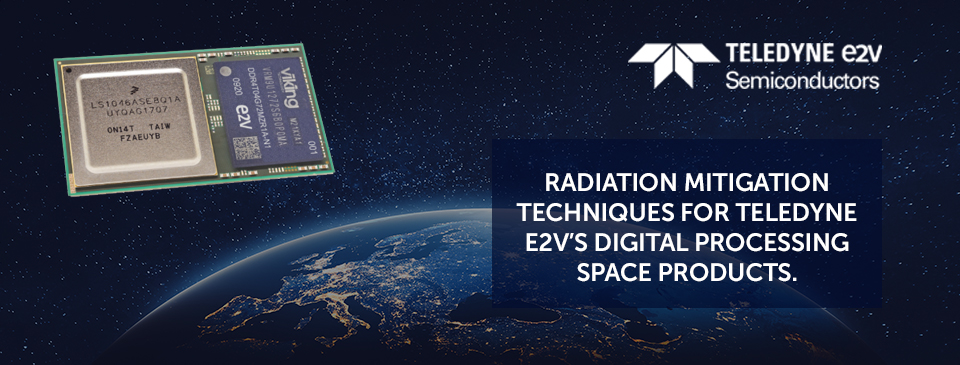
State-of-the-art radiation tolerant CPUs and Memories utilize design and fabrication techniques that are impacted by harsh radiation environments in Space. Single event effects (SEEs) arising from strikes from galactic cosmic rays, protons, or neutrons on these critical components, require radiation mitigation. Understanding and characterizing radiation-induced effects, within a particular radiation environment, is essential in order to outline a procedure for designing and validating Space systems using radiation-tolerant components, and to propose effective mitigation techniques. Utilizing the correct radiation mitigation techniques that account for variations in radiation environments and electronic components is critical in order to minimize cost and maximize system availability and throughput bandwidth with minimal errors incurred. During the design phase, modeling and error rate calculations must be understood to predict system performance requirements.
Teledyne e2v offers state of the art radiation tolerant digital components with performance and functionality for operation under harsh radiation environments; providing a foundation for identifying radiation mitigation techniques that are suitable for Space, and for engineering modifications that would minimize system level radiation effects that would be necessary for current and future developments. This paper first introduces the general radiation effects that can be observed in semiconductors. Then, the typical radiation effects observed on the compute intensive Space products from Teledyne e2v are presented. Finally, the possible radiation mitigation techniques that can be applied to cope with these kinds of effects are proposed and discussed.
If you wish to read more, please click on the following link to download the complete White Paper.
Please fill out & submit the form to receive an answer from our Sales Team or Application Engineers.